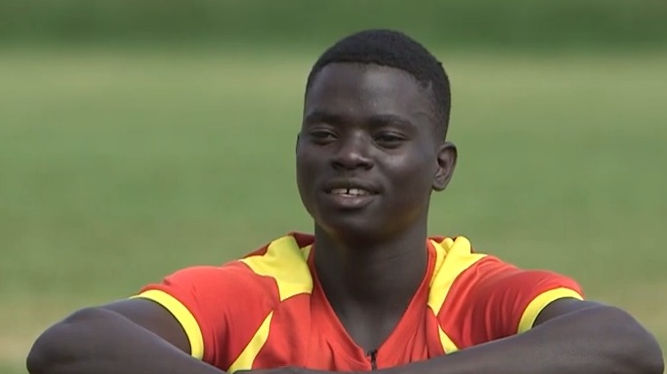Cricket
From slums of Kampala to the T20 World Cup 2024: The inspirational rise of Uganda’s cricket stars- Republic World

Juma Miyagi | Image:Uganda Cricket Association
An estimated 60 percent of Kampala’s population lives in slums, and fast bowler Juma Miyagi has become a cult figure in these impoverished areas. Typically football enthusiasts, the residents of these slums are now eagerly following Miyagi and the Ugandan cricket team’s debut at the ICC T20 World Cup, hoping to live a sporting dream through his achievements.
Also Read | World Cup Winning Captain Warns Australia ahead of T20 WC 2024
Juma Miyagi’s inspirational journey
Miyagi grew up in the slums of Naguru, on the outskirts of Kampala. At 21 years old, he will be leading Uganda’s bowling attack at the ICC showpiece event starting on June 1, just two years after representing Uganda at the U-19 level in the Caribbean. Uganda qualified for their maiden cricket World Cup last November, a milestone that has inspired many.
With 34 wickets in 21 T20 Internationals, Miyagi continues to live in the slums with his family, staying connected to his roots. This is also true for his teammates, including Simon Ssesazi and travelling reserve Innocent Mwebaze. All three players grew up in areas lacking basic amenities such as clean water, sewage systems, and healthcare, living in poorly constructed rooms.
These cricketers have become beacons of hope for their fellow slum dwellers, inspiring a struggling community with their story of hardship and perseverance. Their journey has even moved Uganda’s Indian head coach, Abhay Sharma, who took charge of the team ahead of the ICC event. Although Sharma is familiar with slums, given that India has one of Asia’s largest slums in Dharavi, Mumbai, his time in Kampala has been an eye-opener. Spending time with the players on and off the field has deepened his respect for them immensely.
As the Ugandan cricket team prepares for their historic debut, the stories of Miyagi, Ssesazi, and Mwebaze serve as a powerful testament to resilience and determination. Their participation in the T20 World Cup is not just a personal triumph but a beacon of hope for their community, proving that even from the most challenging circumstances, greatness can emerge.
“Some of the players come from very humble backgrounds and it is inspiring to see them play for the national team.
“I didn’t expect them to live in such conditions before I arrived. Their respect for coaches is also immense. The players think we can change their lives,” he told PTI from Trinidad, where the team is based at the moment ahead of its World Cup opener against Afghanistan in Guyana on June 3.
Unlike players from USA, who will also be making their World Cup debut, a majority Ugandan players don’t have secure full-time jobs to support themselves.
Cricket is still years away from becoming a professional sport and in that context, the four league games they will play at the big stage assume great significance for the future of the game at home.
Also Read | Is Hardik Pandya fit to play ICC T20 World Cup 2024?
Challenges that Uganda cricket faces
Making a World Cup debut will be a lifetime experience for the players but to maintain the upward graph of the sport in the country, Sharma reckons certain changes have to be made to ensure Uganda don’t go the Kenya way.
Kenya, once a regular in top-flight cricket, have not featured in any ICC event since 2011.
“It has been a good experience so far, there are certain things we need to improve. We need better infrastructure and also need to introduce the game at U-16 level,” he said.
“At the moment, whoever does fairly well at the U-19 level is fast-tracked into the national team. We also need more grounds. They have two grounds but one of them is far from Kampala, it is a difficult daily commute.” The struggle of the players travels from their homes to the ground, where they have to fight for basics.
For someone who has coached sport’s powerhouse India at the U-19 and A level, Sharma is trying hard to make the most of the minimal resources at his disposal.
“We need to fight for the basics. Like getting proper practice area, kookaburra balls, diet. We are carrying four boxes of balls for the World Cup. I am told they were only given one box for the whole tournament previously. Things are already changing in that context,” said Sharma.
The squad has competent bowlers like Miyagi and Cosmas Kyewuta, who Sharma reckons can touch close to 150kmph and will be the one to watch out for in the mega event.
However, the talent pool remains small and that is another area where the head coach is already focussing on.
“Talent is there but not enough. We don’t have bench strength and that is one thing we need to develop after the World Cup.” Like most associate nations, Uganda’s strength lies in the bowling department.
“Batting is always the weaker link at the associate level. There are used to playing medium pacers but when they go one step higher, there is a big difference in pace.
“The spinners too are much better. I have already identified few players who can be tested after the World Cup,”
(With inputs from PTI)


)






